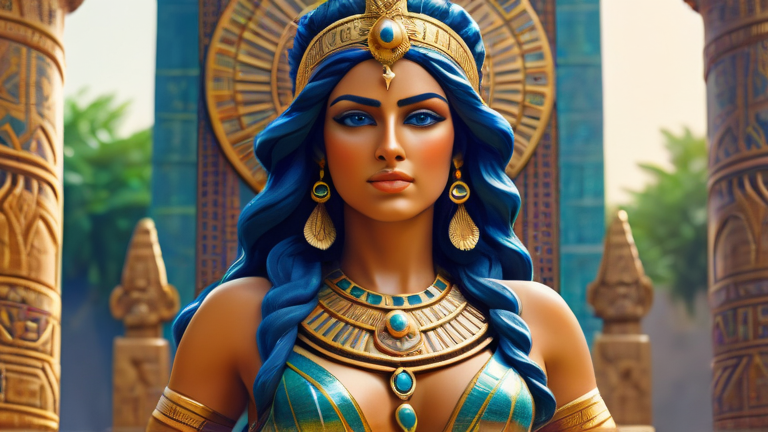
In the pantheon of ancient Mesopotamian deities, one figure stands out for her complexity, power, and enduring influence: Inanna, the Queen of Heaven and Earth. Often hailed as a precursor to the Greek goddess Aphrodite, Inanna captivates with her multifaceted nature, symbols, dominions, and timeless resonance with modern women. This article delves into the enigmatic realm of Inanna, exploring her mythology, symbolism, and significance in both ancient and contemporary contexts.
Inanna, also known as Ishtar in Akkadian mythology, is a prominent goddess in ancient Mesopotamian religion, worshiped primarily in Sumer and later adopted by the Akkadians and Assyrians. She is the daughter of the moon god Nanna and the sister of the sun god Utu. As the Queen of Heaven and Earth, Inanna embodies a wide range of attributes and roles, making her one of the most complex and revered deities in Mesopotamian mythology.
Inanna’s influence extends far beyond the boundaries of Mesopotamia, with scholars often drawing parallels between her and the Greek goddess Aphrodite. Like Aphrodite, Inanna is associated with love, beauty, fertility, and sensuality, embodying both the creative and destructive aspects of these domains. Both goddesses are revered for their transformative powers and their ability to inspire desire, passion, and devotion in mortals and gods alike.

Inanna’s symbols and dominions reflect her diverse and multifaceted nature:
- The Eight-Pointed Star: Inanna’s most iconic symbol, the eight-pointed star, represents the planet Venus, which was associated with the goddess in Mesopotamian cosmology. The star symbolizes Inanna’s role as the morning and evening star, heralding the dawn and dusk and embodying the cyclical nature of life, death, and rebirth.
- The Lion: Inanna is often depicted with lions, symbolizing her power, courage, and ferocity as a warrior goddess. The lion also represents her dominion over the animal kingdom and her role as a protector of cities and their inhabitants.
- The Dove: As a goddess of love and fertility, Inanna is sometimes associated with doves, symbolizing peace, purity, and the divine feminine. Doves are often depicted alongside the goddess in rituals and ceremonies honoring her.
- The Lapis Lazuli: Inanna’s sacred stone, lapis lazuli, symbolizes her connection to the heavens and the cosmos. It is associated with wisdom, truth, and divine knowledge, reflecting Inanna’s role as a goddess of wisdom and enlightenment.
Inanna’s enduring resonance with modern women can be attributed to several factors:
- Empowerment and Independence: Inanna is celebrated for her fierce independence, assertiveness, and refusal to conform to traditional gender roles. She embodies the archetype of the empowered woman who embraces her desires, ambitions, and sexuality without apology.
- Emotional Depth and Complexity: Inanna’s mythology explores themes of love, desire, grief, and transformation, reflecting the emotional complexity of the human experience. Modern women resonate with Inanna’s journey of self-discovery, resilience, and growth in the face of adversity.
- Sovereignty and Self-Expression: Inanna’s role as a queen and a sovereign goddess highlights her agency, autonomy, and ability to assert her will in a male-dominated world. Modern women admire Inanna’s confidence, leadership, and unapologetic self-expression.
Inanna, the Queen of Heaven and Earth, continues to captivate and inspire with her timeless mythology, symbols, and significance. As a precursor to Aphrodite and a symbol of feminine power, beauty, and resilience, Inanna resonates with modern women seeking empowerment, independence, and self-expression. Through her mythology and symbolism, Inanna invites us to embrace our desires, embrace our authenticity, and embrace our divine feminine essence in all its complexity and beauty.
